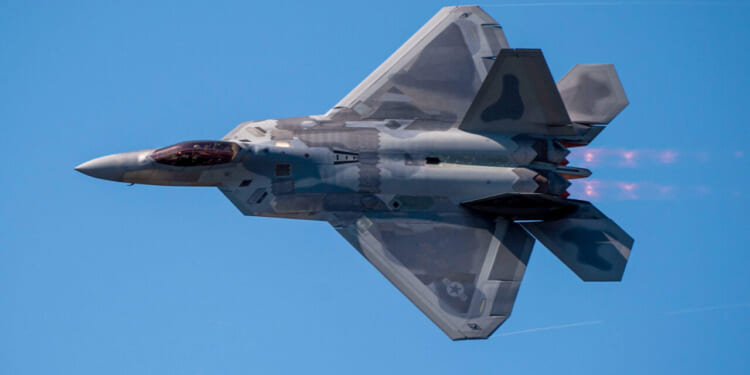Pilots from F-18 Super Hornet and F-35 Lightning II squadrons participated in flyovers during the air show.
September marked 250 years of America’s Navy. To commemorate the service’s outsized role in US history, the 2025 Naval Air Station Oceana Air Show celebrated some of its most legendary aircraft over a two-day-long event. Pilots from F-18 Super Hornet and F-35 Lightning II squadrons participated in flyovers during the air show, in addition to two shows performed by the infamous Blue Angels. The F-22 Raptor Demonstration Team also performed tactical maneuvers during the event, demonstrating the platform’s unparalleled capabilities in the skies. As detailed by NAS Oceana base commander Captain Josh Appezzato, “This year’s theme celebrates the Navy’s history while highlighting the sailors and aircraft that propel us into the future. We’re proud to showcase the power of naval aviation and the wonder of flight, and we look forward to welcoming our community to the Navy’s Master Jet Base for a fun-filled weekend.”
The Super Hornet
Representing the Navy’s carrier-based strike fighter, the F/A-18 E/F Super Hornet series has remained a cornerstone in the service’s air power strategy for decades. The tried and trusted platform is arguably the most advanced multirole strike fighter in service today. Capable of performing nearly every mission in the tactical spectrum, as its manufacturer Boeing likes to say, the Super Hornet will remain relevant for years to come even as next-generation fighters are introduced. The Super Hornet entered operational service with the Navy nearly a quarter-century ago. Over the years, the platform has been extensively used in combat missions across the globe. The latest Block III F-18 iterations are equipped with even hardpoints that can carry a host of short-range Sidewinder missiles, Joint Standoff Weapons, AMRAAMs, Small Diameter Bombs, the Harpoon, the Maverick, and other missiles. While the Super Hornet is not technically a stealth platform, the Block III jets were constructed with reduced radar cross-sections, making them harder for adversarial aircraft and radar to detect.
The Lightning II
The Navy’s carrier-capable Lighting II variant is widely considered to be the most sophisticated fifth-generation platform in service today. The fighter’s weapons load, internal fuel capacity, high-tech sensors, configuration, and other top-tier manufacturing processes contribute to the “Charlie” variant’s unmatched stealth performance. Featuring the Active Electronically Scanned Array (AESA) radar, Electro Optical Targeting System, Distributed Aperture System, and Helmet Mounted Display, the F-35C is truly a powerhouse. The F-35C’s wingspan is notably the widest of all three Lightning II variants, enabling this iteration to maintain lower speeds during takeoff and landing from short runways like aircraft carriers. Additionally, these wingtips are able to fold up, which is a valuable space-saving measure while aboard the big boats. Most importantly, the F-35C features heavy-duty landing gear and a tailhook for its carrier operations. Since the F-35C’s role is to be capable of flying over large swaths of ocean, it is capable of carrying approximately 20,000 pounds of internal fuel, giving it a range of more than 1,200 nautical miles.
About the Author: Maya Carlin
Maya Carlin, National Security Writer with The National Interest, is an analyst with the Center for Security Policy and a former Anna Sobol Levy Fellow at IDC Herzliya in Israel. She has bylines in many publications, including The National Interest, The Jerusalem Post, and The Times of Israel. You can follow her on Twitter: @MayaCarlin.
Image: DVIDS.


















